Verified Answer
Objectives
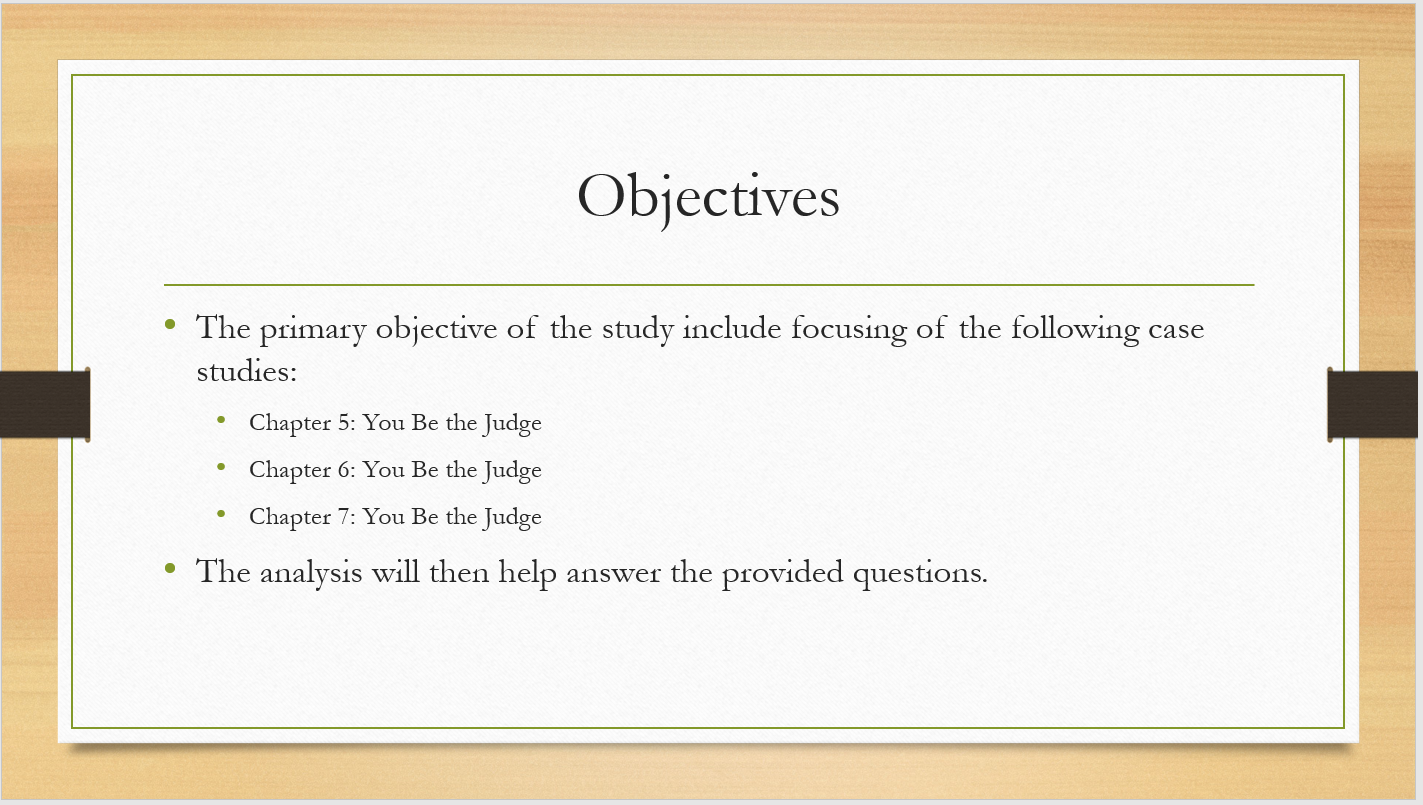
The PowerPoint presentation is based on the analysis of three different case studies within the coursebook and using the information to answer the provided prompts. The analysis would be efficient when creating a means within which appropriate measures are taken and how a person can interpret information based on available data.
Chapter 5 case study
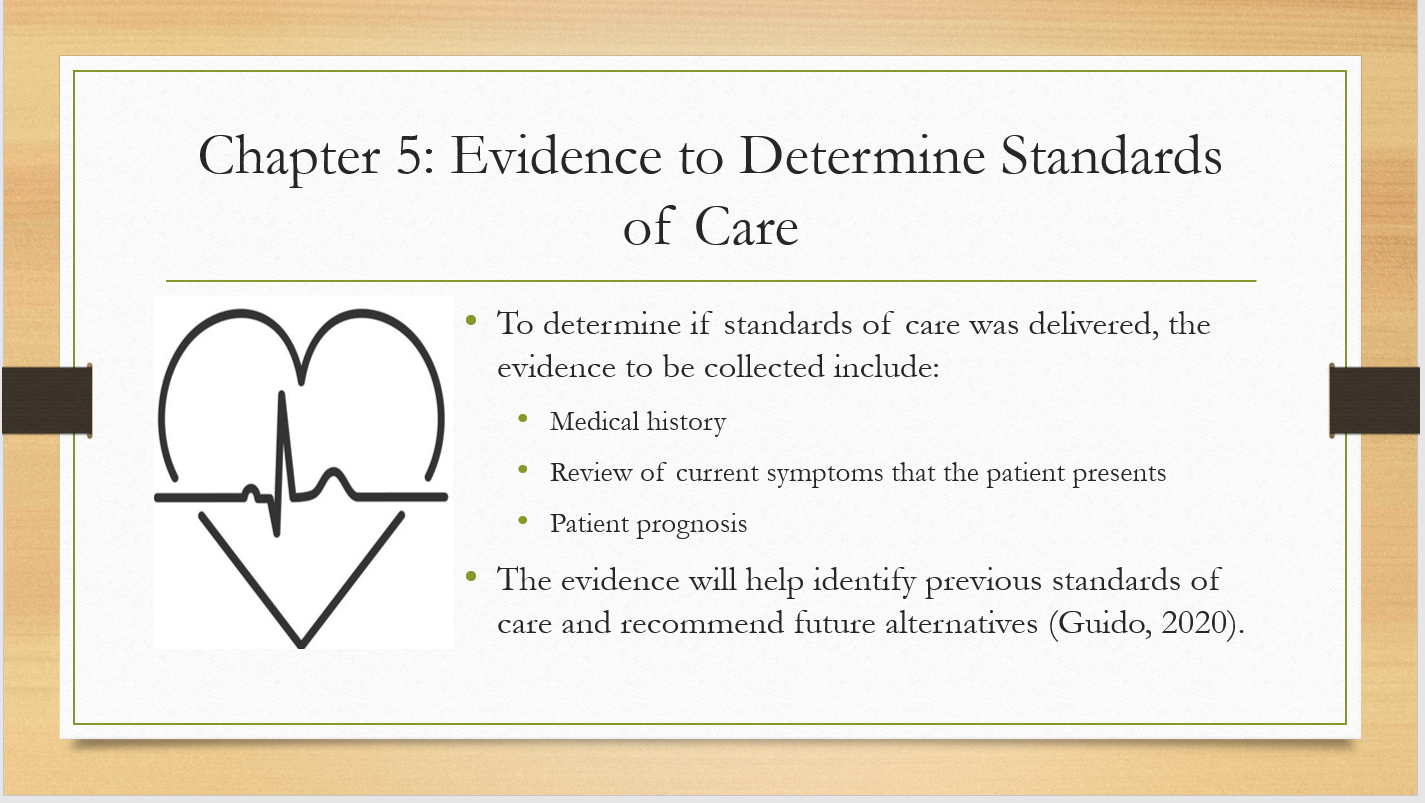
The extent of a patient’s heart problem is determined by their medical history and an assessment of their current symptoms. This can also help exclude other potential causes for their condition (Guido, 2020). It is important to consider the patient’s prognosis in deciding how to manage their illness. Information about any tests or procedures that have been done on the patient can also be significant.
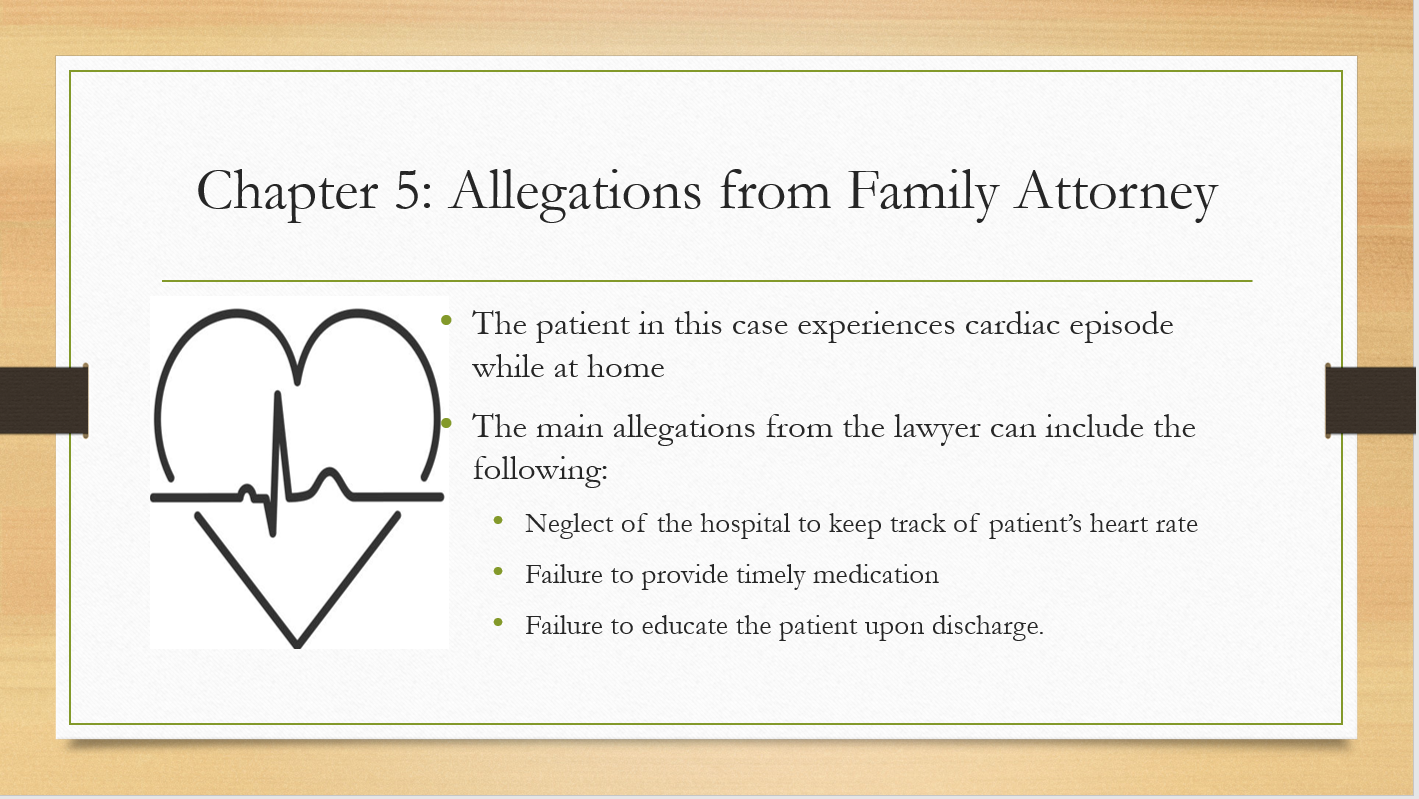
The allegations are based on the case study and can be used to identify charges against the hospital (Guido, 2020). The family attorney might argue that the hospital was careless in monitoring the patient’s heart rate, failed to provide the necessary medication promptly, and did not give the patient sufficient information about what to do after being discharged.
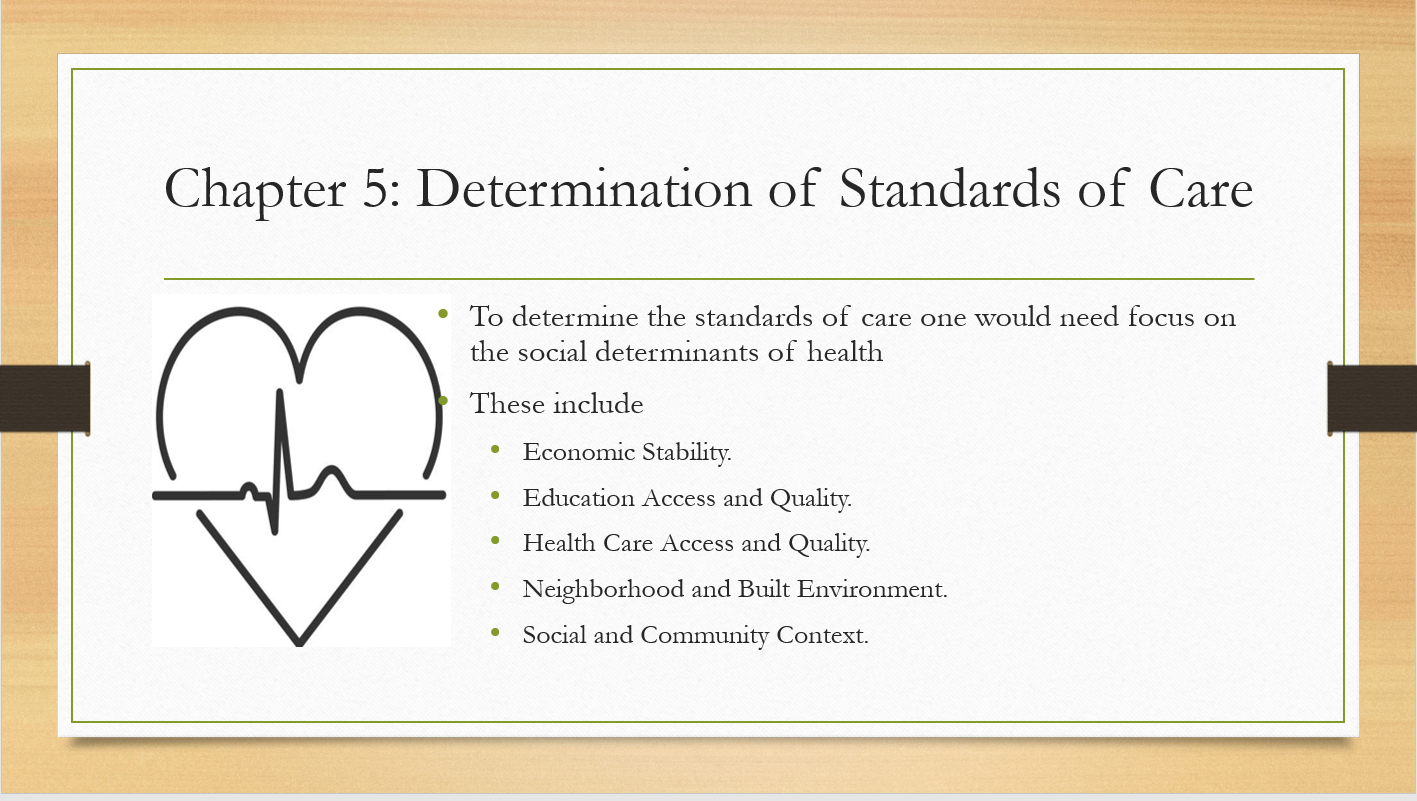
To determine the standards of care that the patients would be given in the future would require the analysis of the social determinants of care. The social determinants of health are the various aspects of the places where people work, play, worship, live, learn, and grow older that can have a significant impact on their health, well-being, and quality of life. These factors can affect a range of health outcomes and risks. These factors include
- Economic Stability.
- Education Access and Quality.
- Health Care Access and Quality.
- Neighborhood and Built Environment.
- Social and Community Context.
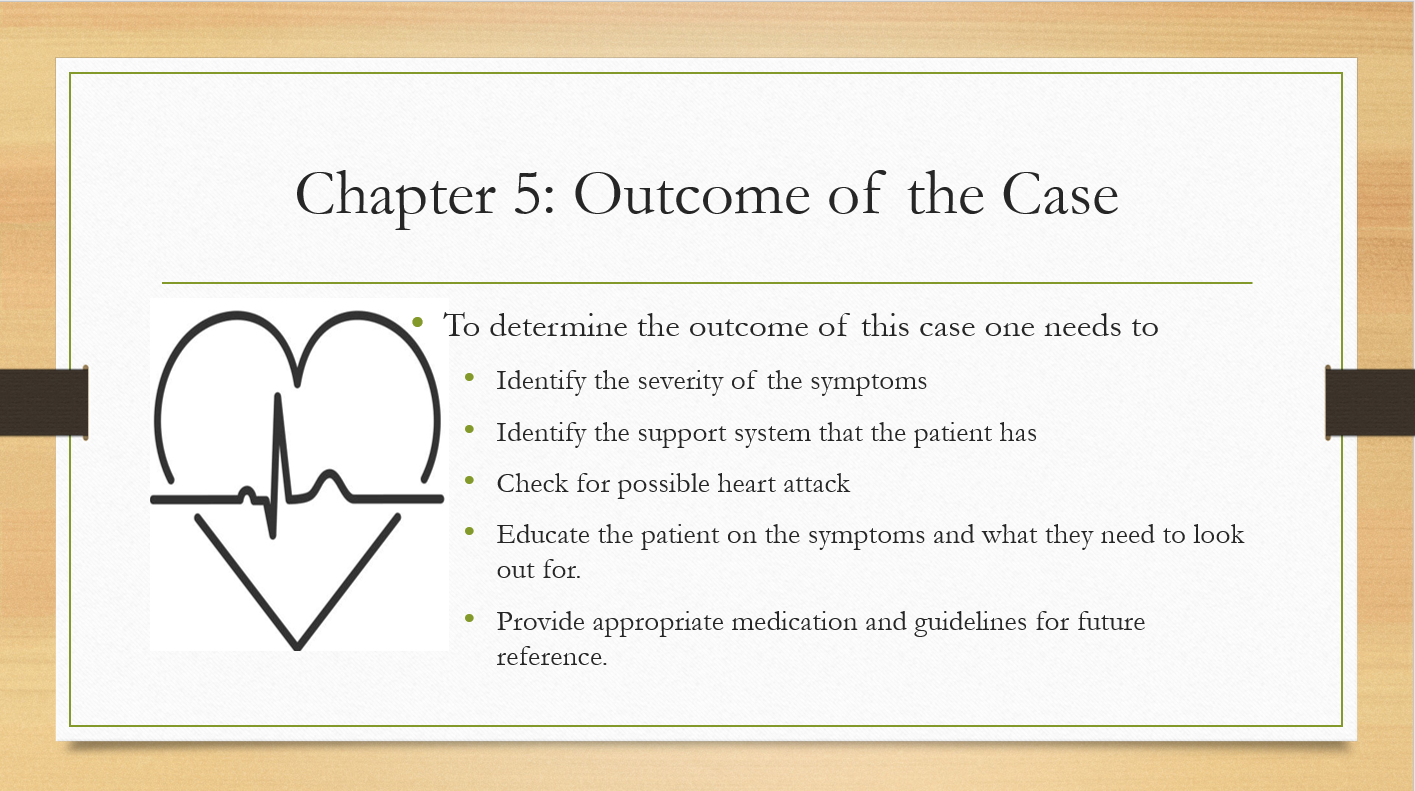
There are different ways to determine the outcome of the case where the patient was discovered to have an apparent cardiac event at home. While there are legal issues that have to be addressed, the health of outcome in relation t the health of the patient will focus on various things. For instance, there is need to identify the severity of the symptoms, identify the support system, check for possible heart attacks, and provide appropriate medication and guidelines for future references.
Chapter 6 case study
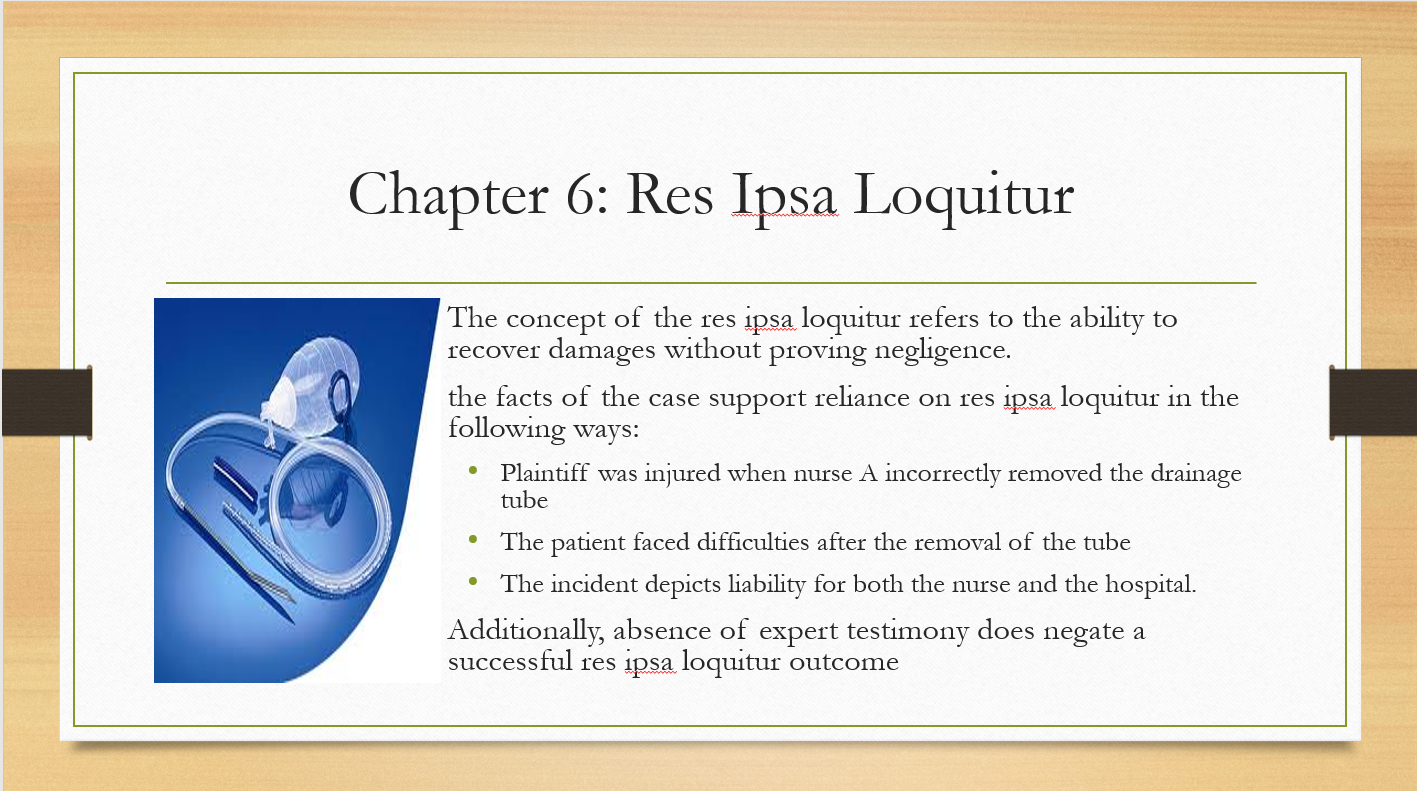
Res ipsa loquitur allows a plaintiff to recover damages without having to prove negligence, as long as it can be shown that an injury occurred (Guido, 2020). The plaintiff was injured when Nurse A improperly removed their drainage tube, causing problems. Both the nurse and the hospital are liable to a lawsuit in this case.
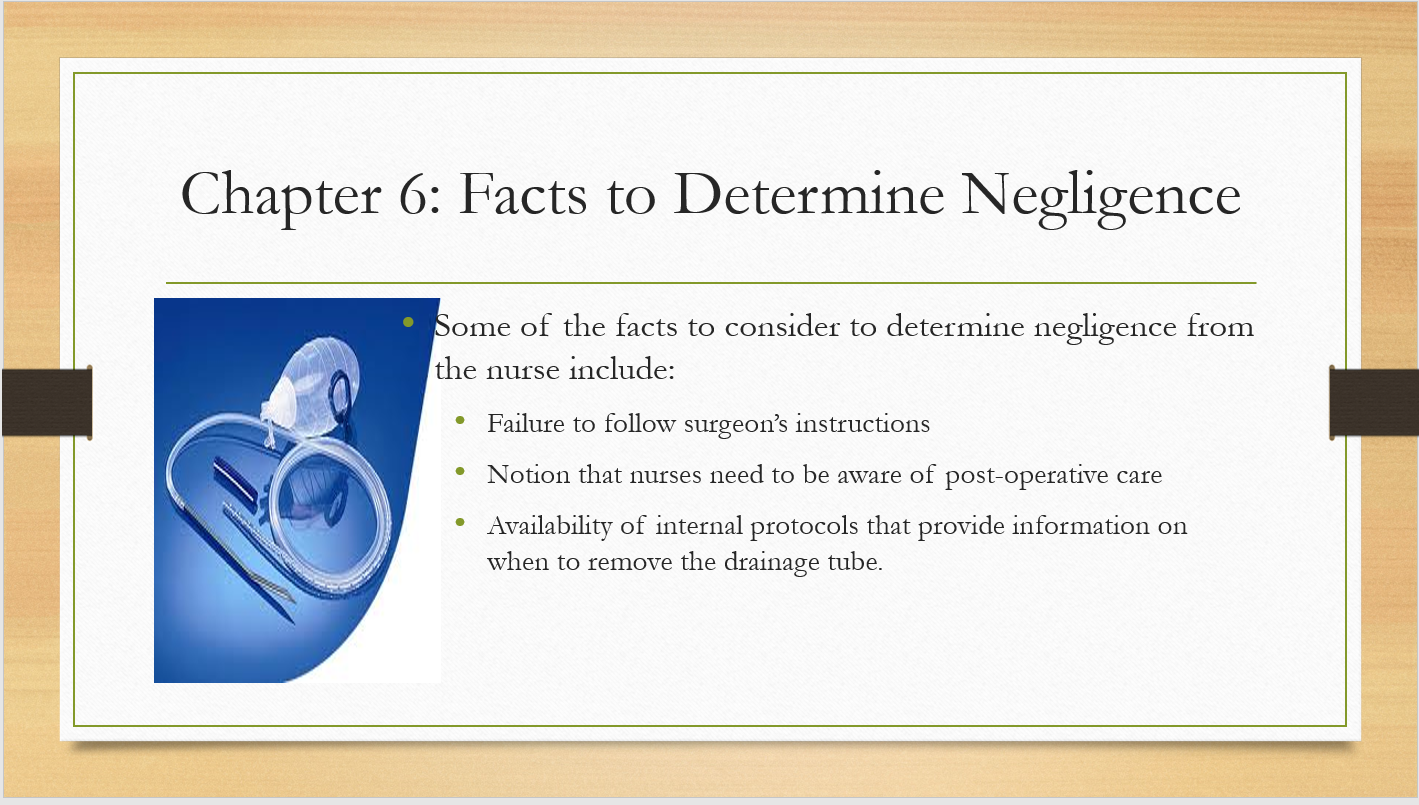
Some of the facts to consider to determine negligence from the nurse include the following. The inability of the nurse to consider the surgeon’s instructions as well when making medical intervention (Guido, 2020). A nurse with more experience is likely to have a better understanding of post-operative care. Some hospitals may have protocols in place stating that a drainage tube must be removed after a certain number of hours, while others may not.
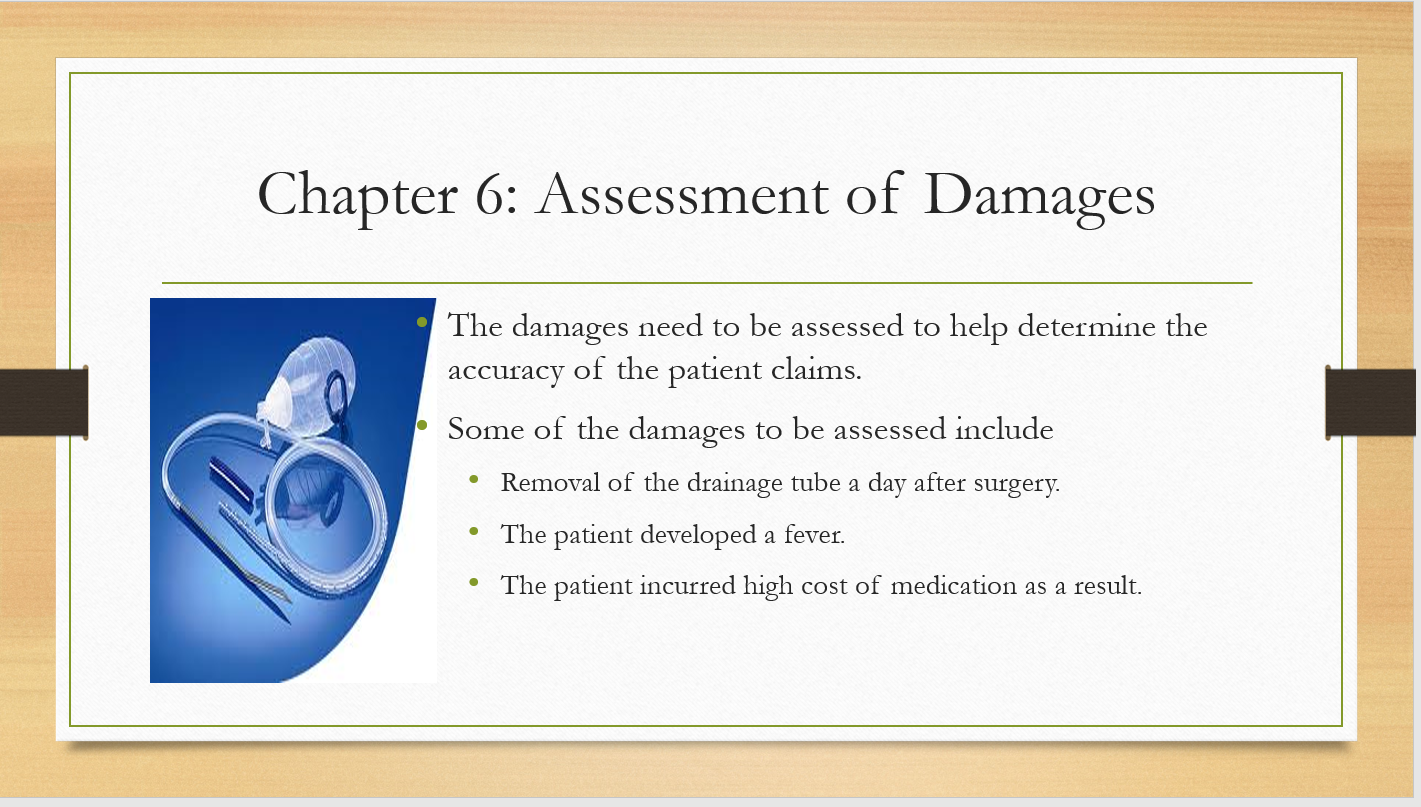
The damages need to be assessed to help determine the accuracy of the patient claims. In this case, various assessments can be made including how the A drainage tube was removed from a patient’s incision the day after surgery. As a result, the patient developed a fever the following day and had to be taken to the hospital. Finally, the patient incurred $5,000 in medical costs due to an infection caused by the nurse’s lack of responsibility (Guido, 2020).
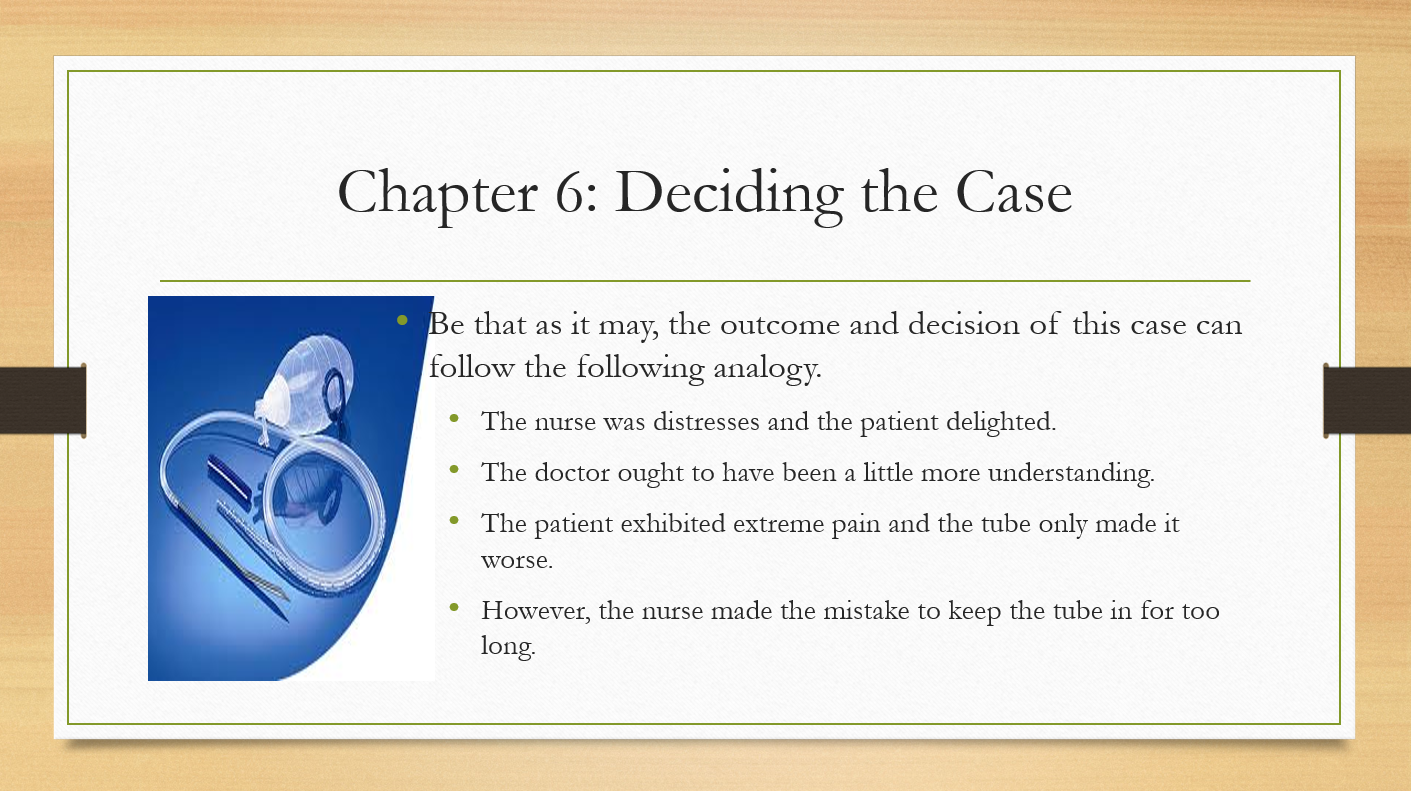
Be that as it may, the outcome and decision of this case can follow the different routes. However, this case depicts how the patient was very happy, but the nurse was upset (Guido, 2020). The doctor should have been more understanding of the patient’s situation. The patient was in severe pain, and the tube was making things worse. It was a mistake for the nurse to leave the tube in for so long.
Chapter 7 case study
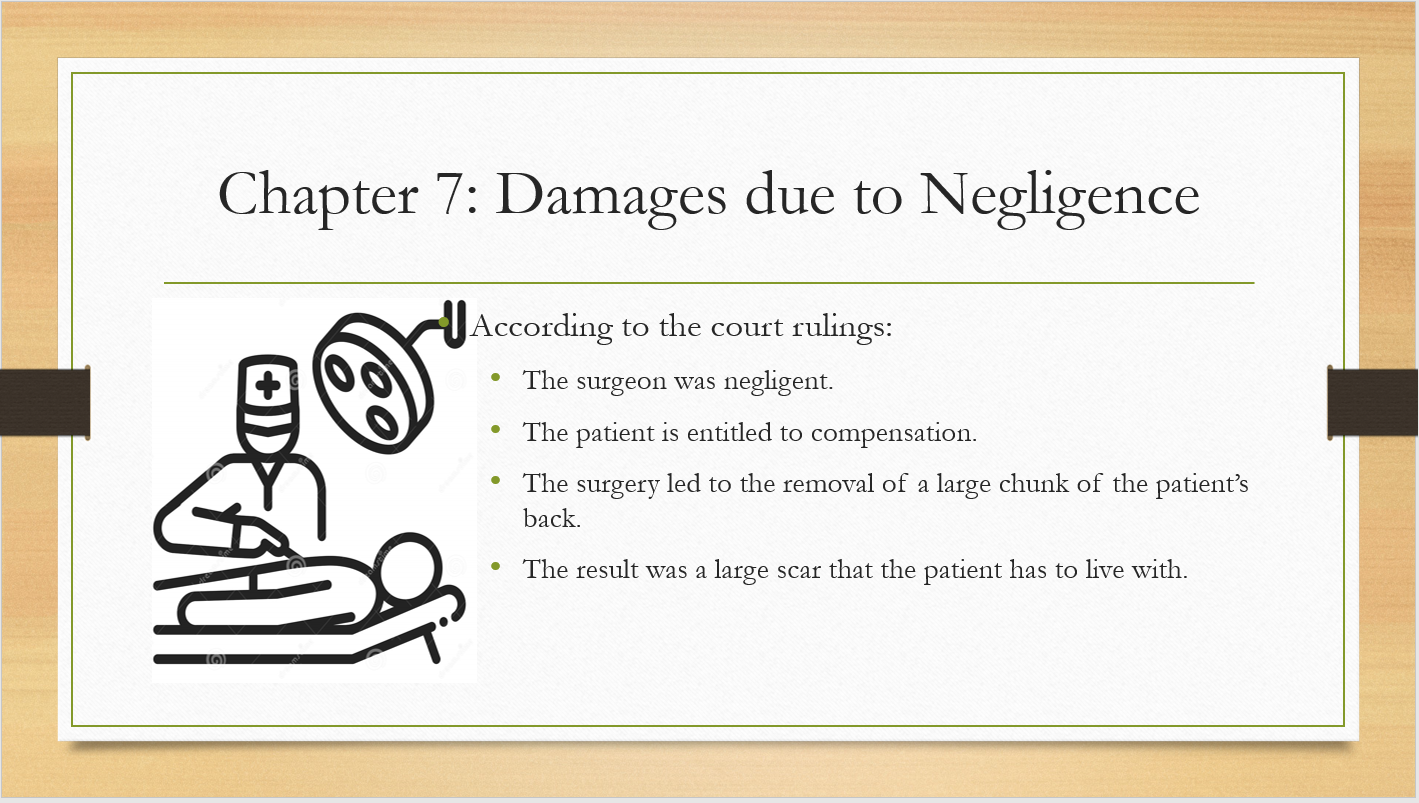
Based on the case, there are different damages that should be paid to the patient following the negligence by the surgeon (Guido, 2020). To begin with, it is critical to note that the determination of the court found the surgeon negligent and the patient was entitled for compensation. The surgery led to the removal of a large chunk of the patient’s back. The result was a large scar that the patient has to live with.
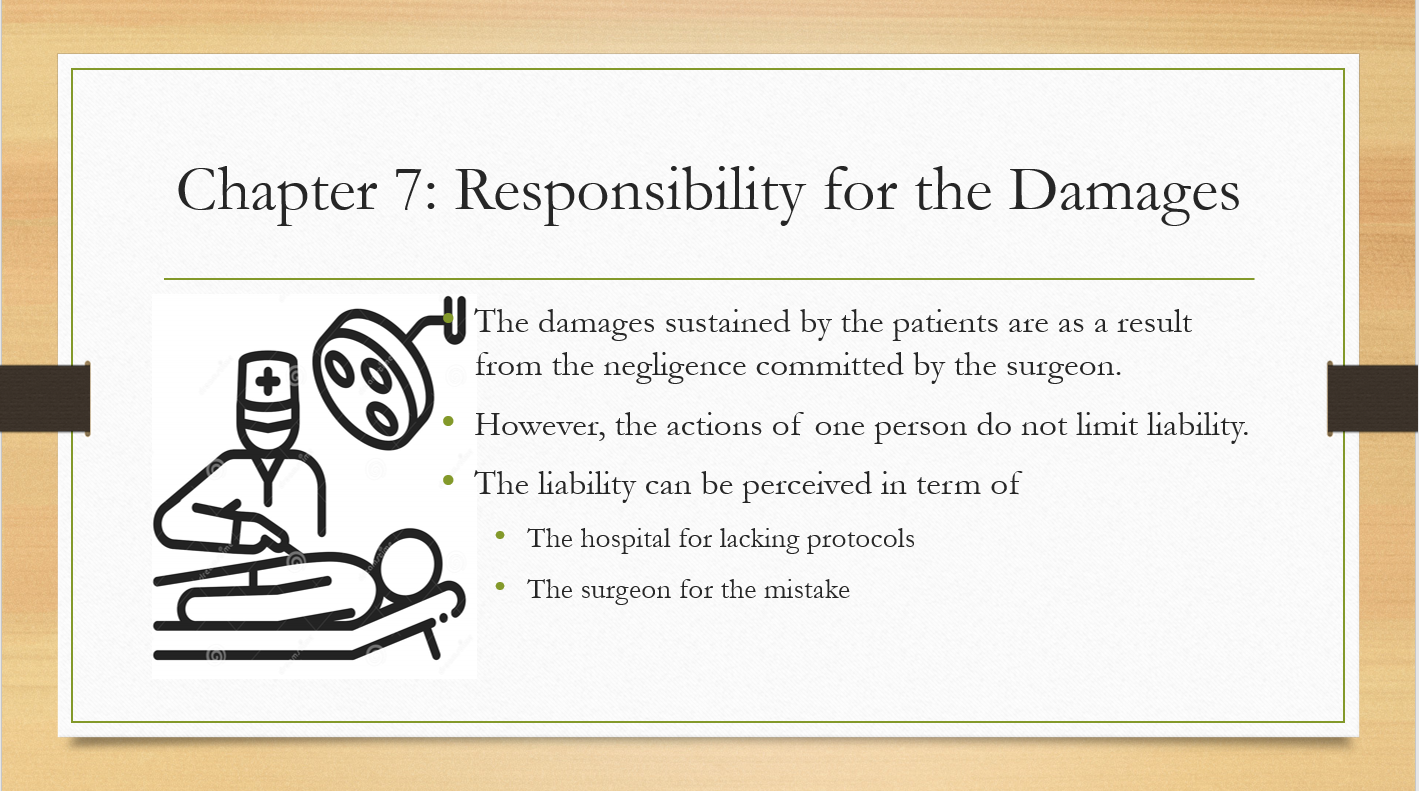
The damages sustained by the patients are as a result from the negligence committed by the surgeon. However, the actions of one person do not limit liability. The surgeon is liable for the mistake while the hospital for lack of protocols and oversight on the surgeon’s actions.

Despite committing the mistake, the defense can argue various points in favor of the surgeon. For instance, the patient’s permission to the surgery is the first line of defense. The defendants followed the usual protocol for the surgery and did not deviate from it. Additionally, it would be difficult for the patient to prove that the defendants are liable because the patient’s problems were unusual and unexpected (Guido, 2020).
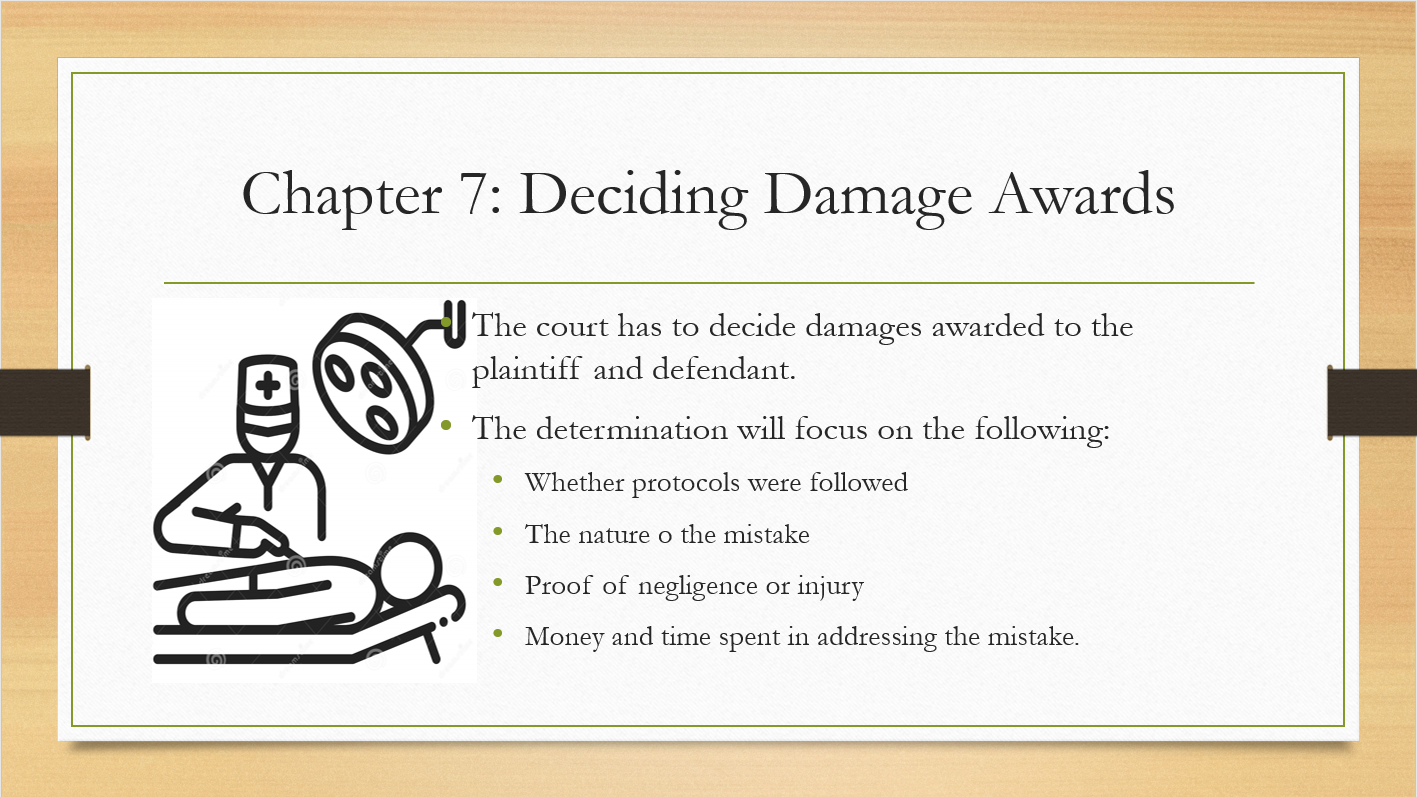
In You Be the Judge, the court needs to decide how much the plaintiff and defendant should be awarded in damages. The severity of the injuries sustained by both parties is important in determining their damages awards. It is also important to consider the amount of suffering each person has experienced as a result of their injuries.
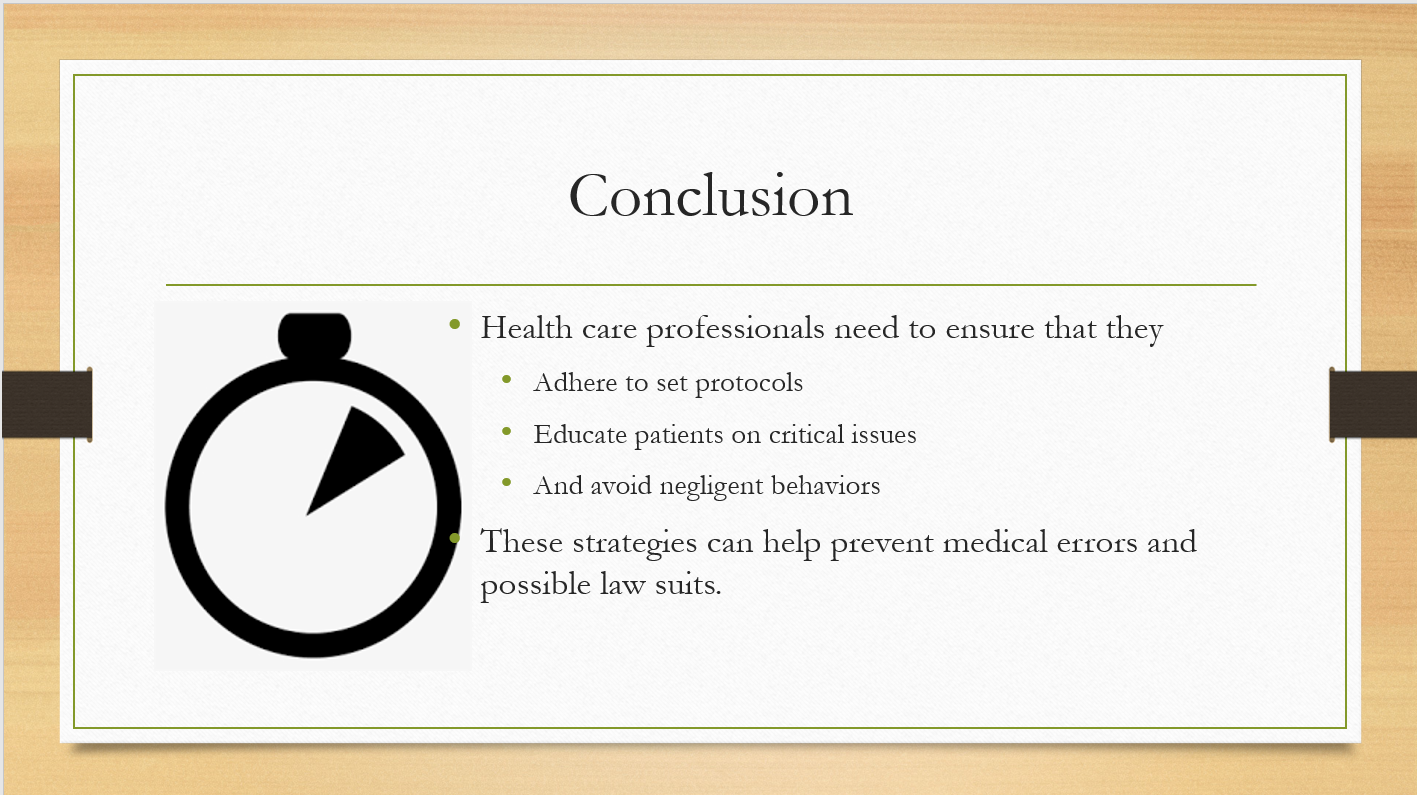
The healthcare sector comprises of different professionals providing critical care to patients. However, there are instances when the professionals make mistakes leading to injuries, death or other complications. To mitigate the issue, care providers need to adhere to set protocols, avoid negligent behaviors, educate patients on critical issues needed after surgery.
Reference
Guido, G. W. (2020). Legal and ethical issues in nursing (7th ed.). Prentice Hall. ISBN: 9780134701233.
Place your order now for a similar assignment and get fast, cheap and best quality work written by our expert level assignment writers. Limited Offer: Get 30% OFF Your First Order
Limited Offer: Get 30% OFF Your First Order

All Rights Reserved University Assignments Writer © 2024

